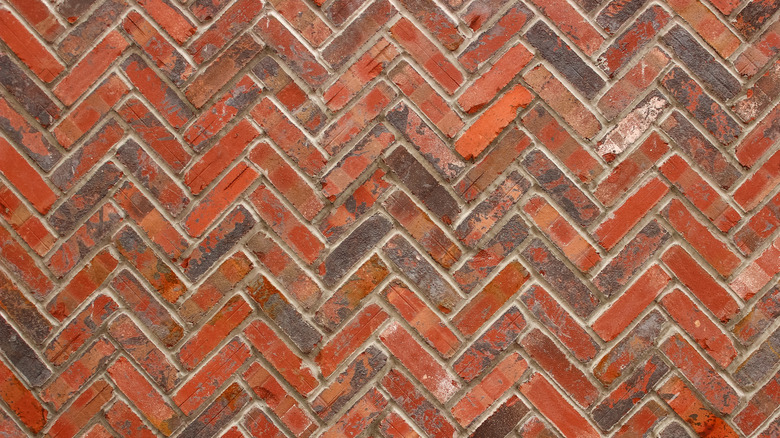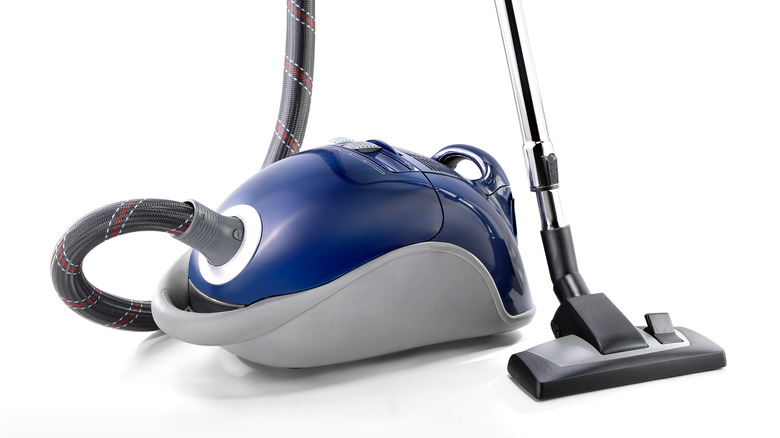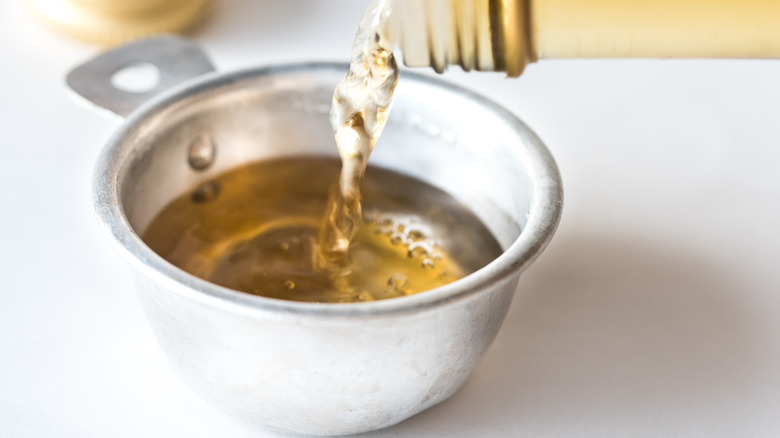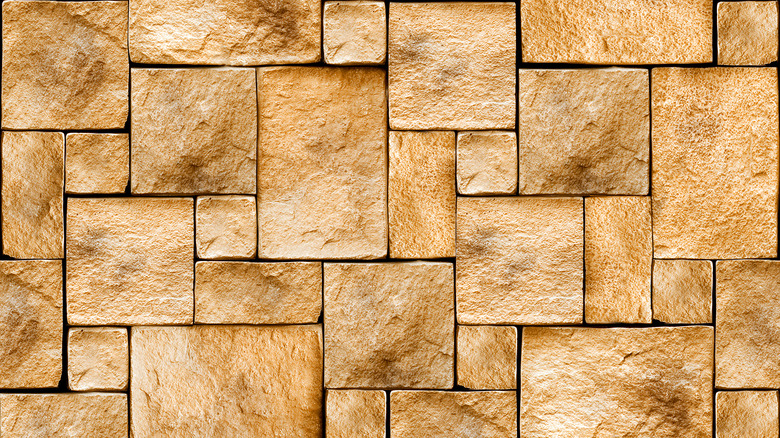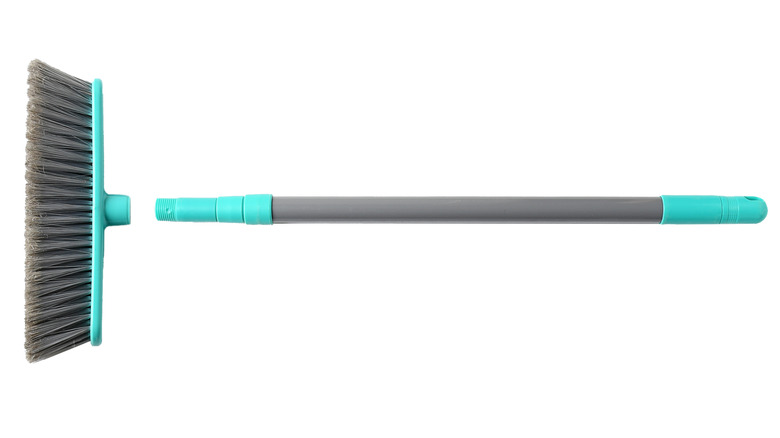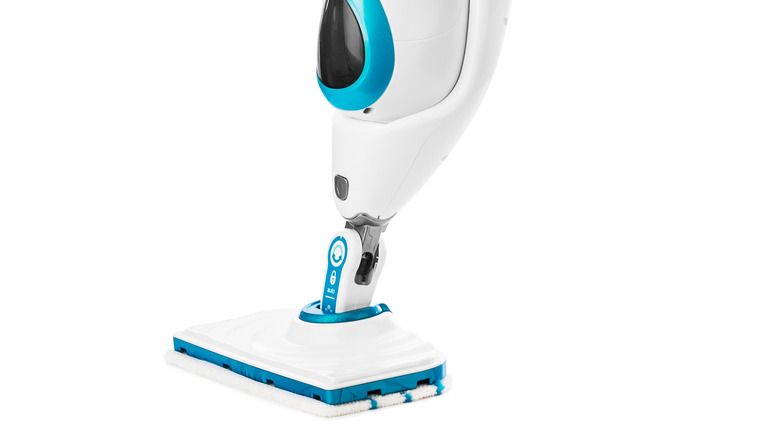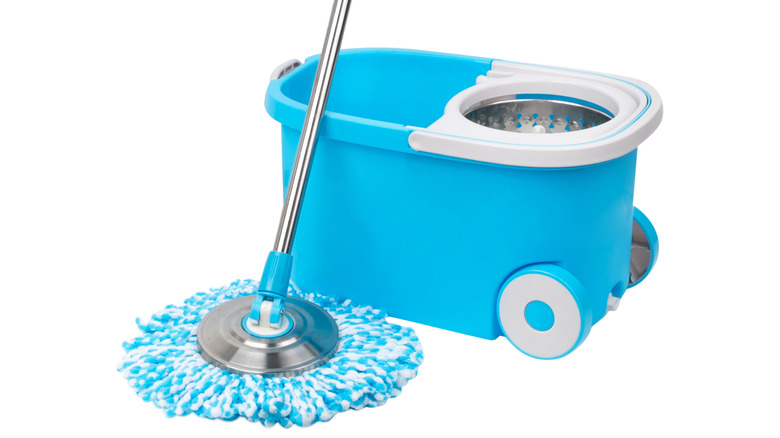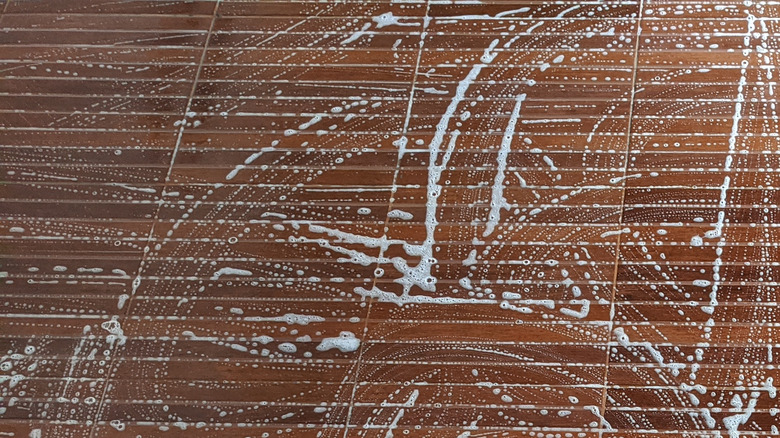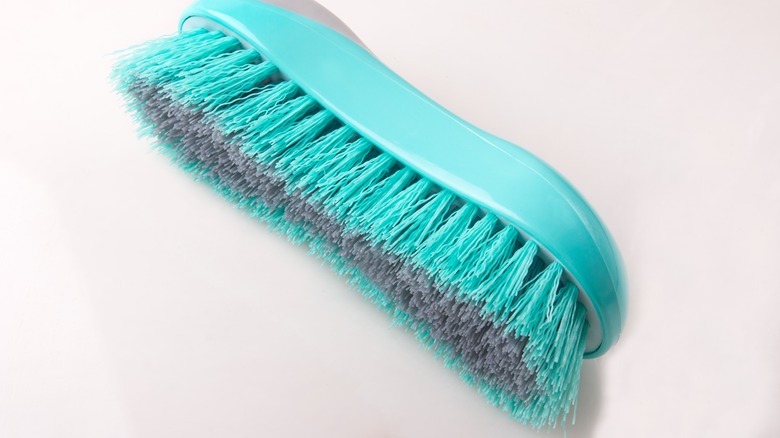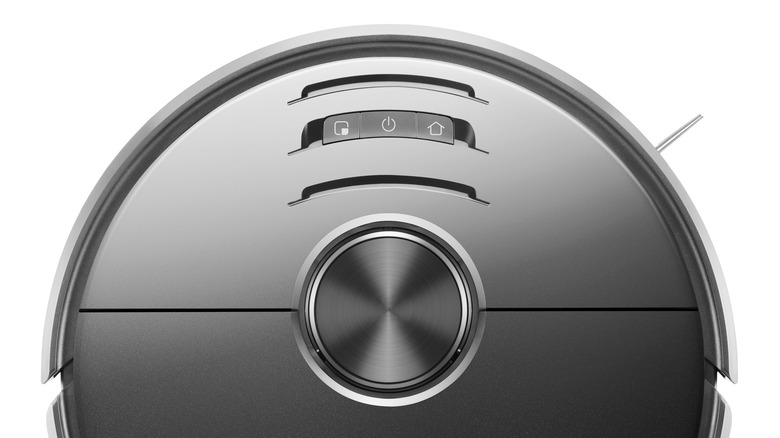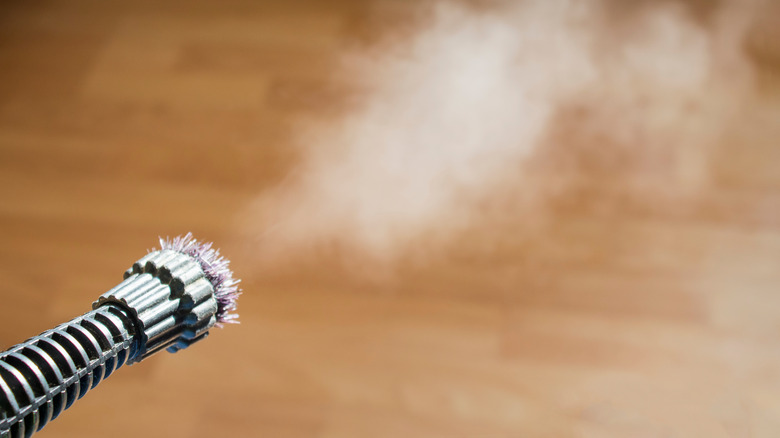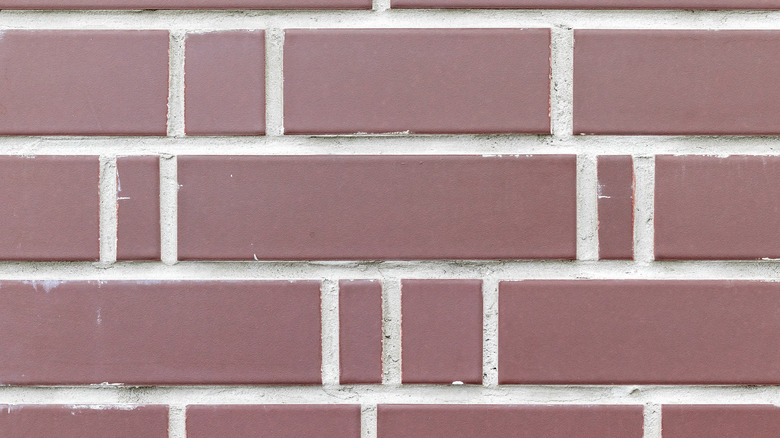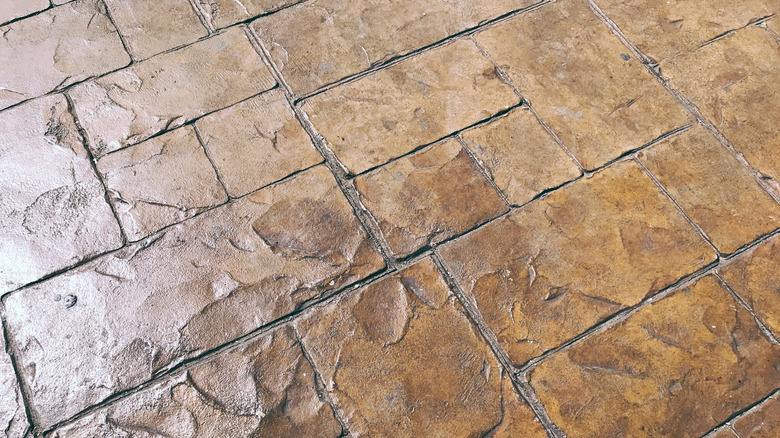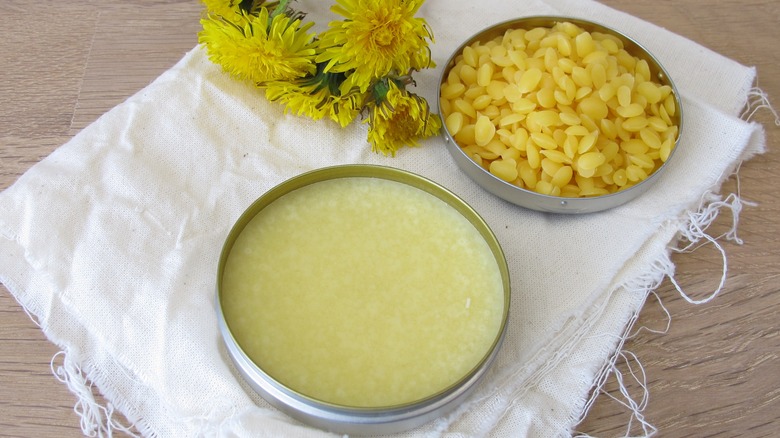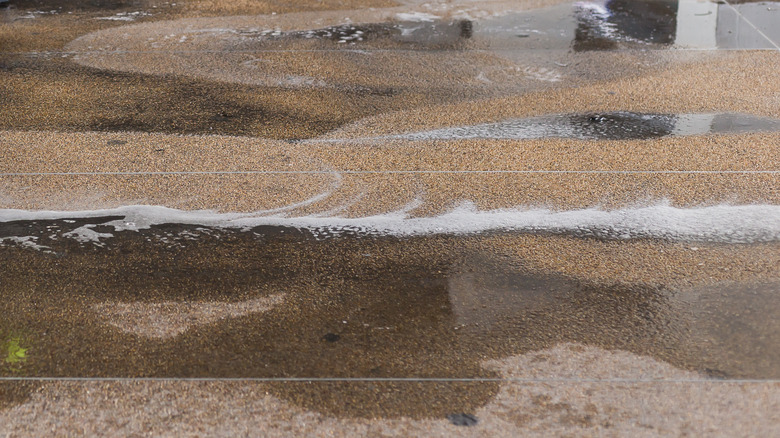The Proper Way To Clean A Brick Floor
Brick floors can be simple and quick to care for. Some tools you can use include a dust mop, vacuum, microfiber mop, and a gentle cleaning solution. Since brick is designed to be used outdoors, and open to the elements, it can withstand a lot of abuse. This means that while it has nooks and crannies that can hold onto dirt, it also can be fairly simply cleaned. According to Real Thin Brick, day-to-day cleaning can be as straightforward as using a dry mop.
Brick floors aren't only low cost and durable, but they're also easy to clean. As they age, bricks will wear in, looking better and softer over time. Because bricks can age gracefully and be recycled and reused many times, showing their wear is part of the charm. Unlike with new tile, a scratch or a slight discoloration on a brick floor is a welcome addition to its overall patina. In addition, the brick surface, while rough, is actually a breeze to clean (via Happho).
Vacuum daily
For quick, day-to-day cleaning, a vacuum works well. This is a quick way to take care of most surface dirt, and will also keep dust from accumulating in crevices and low-traffic areas. Brick will gather dust rather easily, so a vacuum can be an efficient way to clean it, according to brick floor owner Ashley Harrison, author of At Ashley's Place. Brick will develop a natural patina over time, so cleaning it doesn't need to be an all-stops, no-holds-barred experience. Running a vacuum over it just as often as you'd clean your other floors is sufficient for everyday care.
Harrison also points out that brick floors hide dirt well, so if you can't vacuum every day, they will still look good. This makes them a practical choice for kitchens, mud rooms, and other high-traffic areas. Occasional vacuuming is all you may need to keep your brick floors looking great.
Make it shine
There's a secret to getting your brick floor to shine, even after years of use. According to Get Set Clean, a cup of vinegar and warm water will make your brick shine without any polishing, sealant, or scrubbing involved. Just add a cup to your mop bucket and mop your floors as usual, and cleaning with vinegar will help bring back the shine to your brick's surface.
Use caution, though: If you're dealing with concrete bricks rather than traditional clay, the acid in vinegar can degrade the cement that holds the concrete together. On its own, regular household vinegar won't dissolve concrete bricks, but repeated exposure can weaken them. Unlike clay bricks that don't use cement to hold the structure together, the cement that binds concrete does react with the acid in vinegar, known as acetic acid. For this reason, it's smart to make sure you're working with traditional clay bricks before you try out this cleaning technique (via Gizmoplans).
Don't clean it!
Brick might have a reputation for being hard to deal with, but people who have brick floors often report having the opposite experience. For the simplest of all possible solutions, lifestyle blogger Julie Blanner says that you don't need to scrub your brick floors. Rather than worrying about the dirt, you can simply appreciate the patina that the bricks gather with age. If you have a mess, a very occasional scrub can do the trick. That's it. Blanner's advice: Don't bother cleaning your brick floors beyond occasional dust removal.
While many brick floors are porous, if you have brick floors that have a mortar level with the top of the brick, also known as "floated," it's waterproof in addition to being extremely durable. This will keep moisture and mildew from building up in the crevices. That means that you barely have to clean it at all, and certainly no more than any other floor (via Burnished Haus).
Use a broom
Because part of the appeal of a brick floor is its aged, lived-in look, regular maintenance isn't as rigorous as some other tile types. In a review written one year after installing their brick flooring, Wildfire Interiors reports that for dust and dirt, you can just use a broom to keep up with the daily mess. With all the traffic an entryway brick floor might get, a once-per-week sweep seems very low-key. Since brick will catch dirt and keep it from being tracked into the rest of the house, a brick entryway can actually make it easier to keep the rest of your house clean.
A sealed brick floor will be the most painless to clean because it's waterproof. It won't absorb grease or liquid, so it's nearly impervious to staining. Rather than scrubbing out stains, spills can be wiped up with little effort (via The Brick Tile Co.).
Use a steam mop
If you're worried about germs, there is a solution to help keep your brick floors clean. You don't necessarily need to get out your floor mop and bucket to kill germs; a steam mop will kill any bacteria. Adding heat to your floor cleaning routine is a good habit, says House of Fancy, so steam mops are a great choice.
Use caution when choosing this method, because steam mops can be tough to use properly. They can be effective for killing viruses if you use them correctly; however, they aren't foolproof. Steam mops need to be held in place for up to 10 minutes to reach high enough temperatures to get rid of all the germs, and can cause damage to some flooring (via Consumer Reports). Since sealed brick is heat- and moisture-resistant, a steam mop may work, but make sure you aren't pulling up your tiles.
Seal your floors
Sealing your brick floors will make them nearly waterproof and make cleaning them trouble-free, but using the right sealant is important for the best results. Some floor sealers aren't designed to be applied one right after the other, so sealant can build up and create unsightly gunk in the crevices of your brick.
You can avoid this issue by using a solvent-based sealer to prevent wax buildup and staining. Sealing brick is a more involved process than other steps in the cleaning process. You'll need a scrub brush, rags, a mop, and some towels for this task. According to Keith Clay Floors, you should apply your sealer with a mop to a clean and completely dry floor and then allow it to dry. Once dry, a second coat is recommended. While sealing your brick floor is more demanding than most other cleaning tasks, you can rest assured that it lasts for a year. Doing an annual deep cleaning and resealing will keep your brick from staining and make it no trouble to keep clean the other 364 days of the year.
Use a mop with mild detergent
Brick floors don't tend to hold onto dirt, but if they do, you can use a damp mop with a mild detergent for routine cleaning. While the texture of brick is certainly a challenge for most mops, a microfiber mop will hold up better than other types, according to Inglenook Tile. Using dish soap in your mop water will work fine, or you can choose a product specifically designed for floors. Just remember that acid can damage grout. Unless the situation calls for it, stay away from acid-based cleaners to avoid damaging your floors or eroding the sealer and opt instead for soap-based cleaning solutions.
If you need to mop your floor, a solution with a neutral detergent will work, and it won't damage your floor. Mopping your floor should be done sparingly, using a damp, but not soaking, mop. It's also important to allow the sealant on your floor to cure for about 60 days before heavy use and mopping, so this type of cleaning shouldn't be done regularly (via Ed's Brick Floor Service).
Use a stiff-bristled brush
For the most part, brick floors are fairly stress-free, but if you get anything sticky on them, it could be a real pain to get out. Because the surface of the brick is uneven, getting gummy or sticky spills out of the nooks and crannies can pose a real challenge. There is a solution, though: For annual or biannual deep cleaning or before sealing your floor, you can use a stiff-bristled scrub brush to get rid of any sticky dirt.
The Workshop recommends using a gentle detergent, or even plain water, just like you would with a mop, and scrubbing the goo out with the brush. Brick floors are nearly indestructible; a good scrub won't hurt them. Make sure to rinse your brick with clean water after it's scrubbed. The residue left from the scrub brush will dry in indented areas, redepositing dirt in the crevices.
Use a robot vacuum
For regular cleaning, vacuuming your brick floors doesn't have to be hard, especially if your brick floor is properly sealed. While some types of vacuum cleaners can damage certain tiles or types of flooring, brick is a very tough material. You don't need a specialized vacuum to clean it, and you can even automate the task.
You can use an automated vacuum for stress-free daily care, says Style by Emily Henderson. Brick tiles aren't as maintenance-heavy as they might seem, and your cleaning routine doesn't need to be intense. Having sealed brick floors with grout that is applied flush to the surface of the brick allows the vacuum to easily suck up crumbs and dirt. In a kitchen, daily vacuuming is recommended, but in other, less messy areas, you might choose to do this with less frequency. A robot vacuum will surely save you time, though.
Rent a professional steamer
High temperatures can kill bacteria and viruses on floor surfaces. According to Maid Share, the heat and pressure of a steam cleaner will kill 99% of germs. The great thing about using steam is that you don't need to use any detergent in the process. This makes it a safer alternative for pets and kids since the only residue left behind is a small amount of water.
Owning a steam cleaner that's effective enough to kill germs might get pricey, though. If you only plan to do a deep clean every so often, you can rent a steam cleaner for the job. Using a rental steamer means it won't take up storage space. A Eurosteamer that can be rented from your local hardware store can be attached to a garden hose for easy hook-up. It's capable of safely cleaning multiple surfaces including brick (via The Home Depot).
Keep your grout bright
Spending the time and effort to clean your brick floor only to have it look dingy is a real let-down. Not all brick floors have grout that's flush with the surface of the brick, so the grout lines can be a place where dirty water pools and dries, leaving a dull appearance and ruining all your cleaning endeavors.
Since dirty grout can make your whole floor look dirty, keeping the grout clean is important. It doesn't take a whole lot of work, though, according to Capital Masonry. Using the same cleaning solution you would use for regular mopping, you can use a brush to scrub the grout clean. Adding baking soda to your cleaning solution can help take stains out of grout if you have some stubborn build-up. Normal mopping followed by thoroughly rinsing with clean water will keep your grout bright, and keep your floor looking clean.
Remove wax build-up
If you're sealing your floors annually, even if you use a wax that is intended to remove the previous layer of wax, you might get some build-up in the hollows of the brick or along the grout lines. This will eventually become discolored and will make your floor look dirty even if it's freshly cleaned.
You can eliminate this problem by using a stripper and a scrub brush — or a scrubbing machine — to remove wax build-up on brick floors, says How Stuff Works. Once the build-up of sealer is taken care of, you can apply the sealer onto the clean, dry brick surface to protect the floors. Be sure to avoid using acids or any kind of harsh detergents on your brick as these can eat away at the grout. Doing this as a part of your annual resealing routine will make it easier to keep your floors looking cleaner all year.
Use beeswax
Brick floors can pose a wide variety of challenges, including finding a sealer that's safe for kids and pets. From toddlers, who will literally lick the floor, to pets that can easily transfer whatever is on their paws to their mouths, finding a safe product can be difficult.
Luckily, there's an age-old solution to sealing brick and other porous surfaces like stone: beeswax. In addition to being waterproof, beeswax offers a food-grade finish for almost any surface, including your brick floors. The Honey Guy recommends using a melted paste wax on the surface of your brick and working it in with a rag. Allow some time for the wax to penetrate, then buff it off, either by hand or with a buffing machine. Using a fabric buffing pad rather than wool will avoid fibers getting stuck in the wax. You can apply a second coat for extra protection and a shinier look.
Use acid gel
There's a lot of advice about keeping acidic cleaners away from your bricks because they can damage your grout. There is an exception to his rule, though. In some cases, acid can help restore a brick's color after being stained or neglected. This is a cleaning method only to be used in extreme cases — and preferably with the advice of a professional — but it can bring life back into an old, discolored brick floor.
When moisture damages a brick floor, such as in older buildings, you can use a gel acid product for deep cleaning, says Suffolk Tile Doctor. Because it's in gel form, the acid is easier to control and can be managed and neutralized more effectively. Using a carborundum pad that's specifically designed for use with acid cleaning products, work the acid into the bricks and grout, then rinse with as little water as possible. You can then use a wet vac to dry the floor and remove the rest of the cleansing gel. Make sure to use protective equipment when handling acidic cleaning products to avoid injury.
